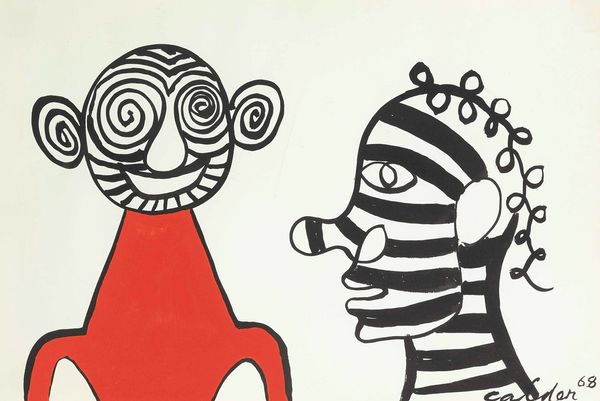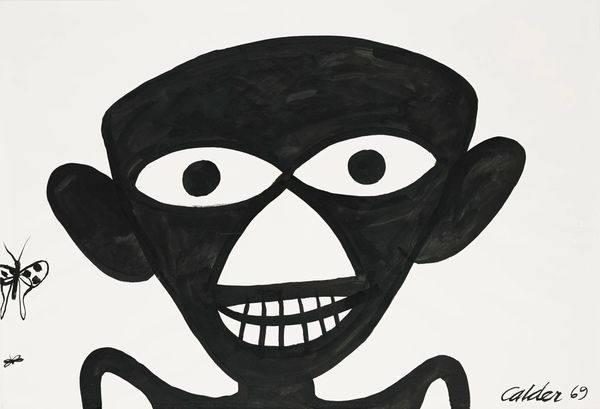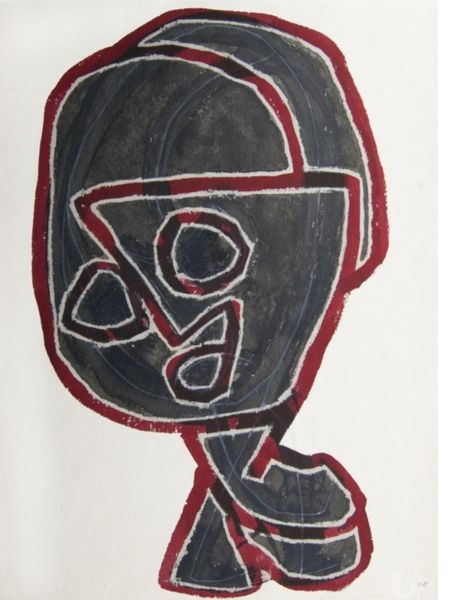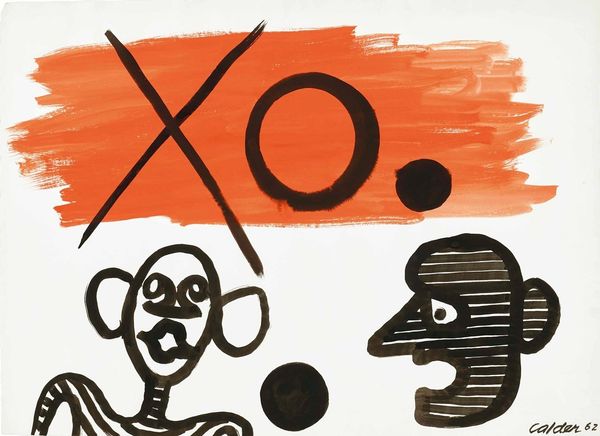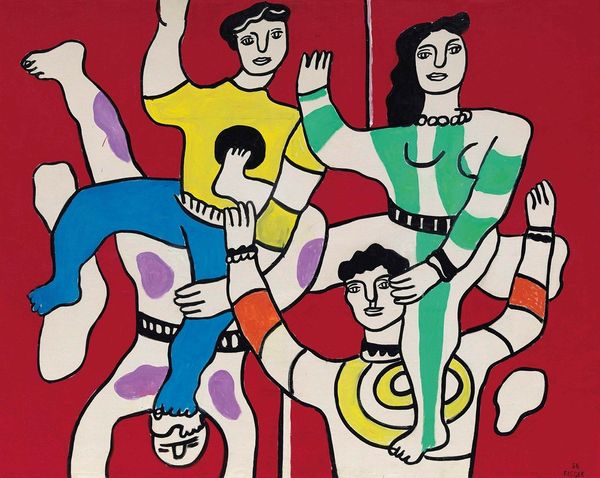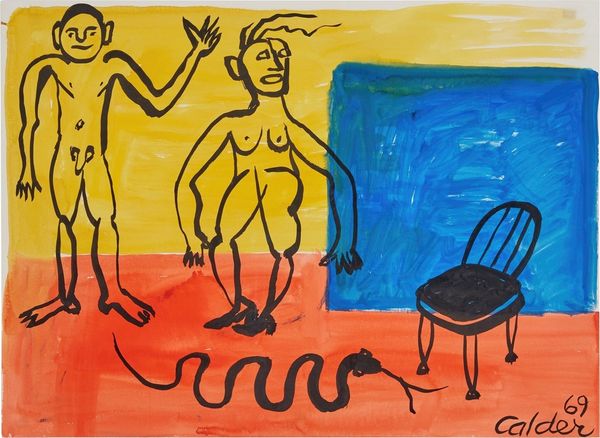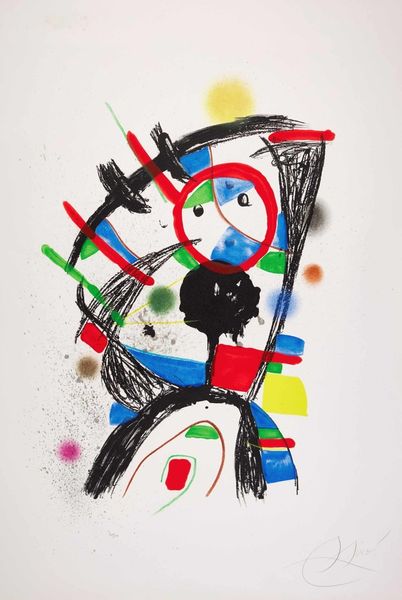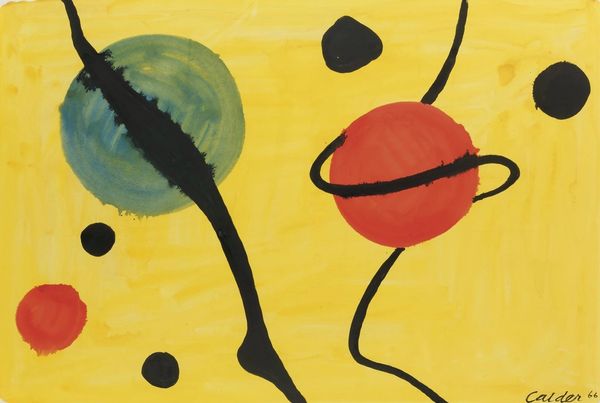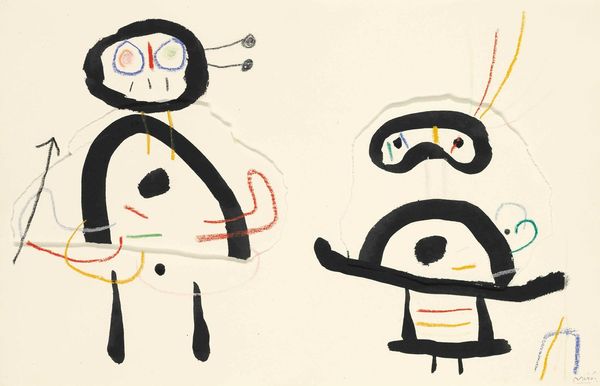
Copyright: Modern Artists: Artvee
Curator: Here we have Alexander Calder’s, "The Empty Head", painted in 1969, with acrylics on canvas. Calder, of course, best known for his mobiles, but equally captivating are his works on canvas like this. Editor: Right. Immediate reaction: cheerfully absurd! It reminds me a bit of kindergarten art, yet these cartoonish figures radiate some deeply knowing commentary, doesn't it? Curator: Indeed. Look at the construction here; Calder utilizes flat planes of unmodulated color and simplistic line work. The raw, almost crude application, contrasts sharply with the technical precision of his kinetic sculptures. It's almost a challenge to the established notions of "high" art. Editor: A delicious challenge. I’m drawn to the sheer confidence. Notice how the blank eyes, mere cutouts, somehow convey so much emptiness. It’s a masterstroke of less is more. Also, this contrast of darks and light, how does it impact the composition? Curator: The bold contrast certainly commands attention. We can understand this choice in terms of accessible consumer culture from the 1960s. We should understand how commercial strategies such as graphic art and printed media heavily relied on bold use of simple elements in design, and we may find it in the way that "The Empty Head" uses flat colours as a method of figuration to be related to these contexts. Editor: True, there's an inherent connection. But perhaps beyond that commentary, it expresses a deeper state of mind—anxiety perhaps? Curator: That interpretation holds weight. Consider the socio-political climate of 1969, the backdrop of war protests, and general societal turbulence. It's quite possible, as you said, that "The Empty Head" reflects this unease—but stripped of overtly political iconography, distilling a shared existential vacuum instead. Editor: I appreciate how it straddles playfulness and profoundness, without being pedantic about either. Art with such an attitude that tells us not to take everything so seriously all the time, because emptiness itself might even have a smile. Curator: Indeed. In conclusion, it urges us to look beyond the familiar, engaging with its materials and production conditions to see more depth and significance. Editor: Yes, and it shows us how simple materials combined with imagination might evoke complex ideas about the self. I leave enriched and ever so amused.
Comments
No comments
Be the first to comment and join the conversation on the ultimate creative platform.
